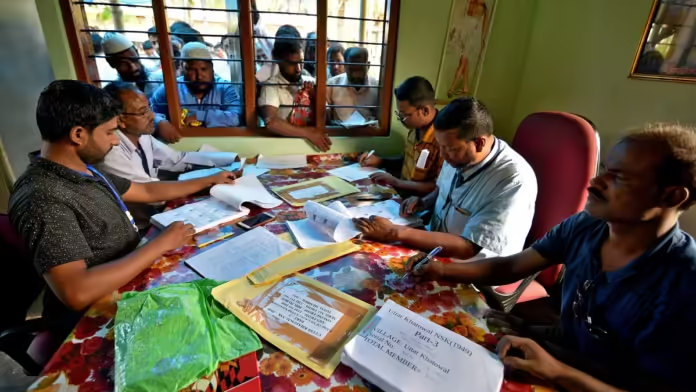The detection of over 47,900 foreigners by the Assam government over a span of 43 years underscores the state’s ongoing efforts to address the complex issue of illegal immigration. This situation has long been a sensitive topic, influencing the socio-political landscape of the region and fueling debates on identity, citizenship, and national security.
Historical Context: The Roots of the Issue
The northeastern Indian state of Assam has long struggled with the problem of illegal immigration. Beginning with India’s 1947 partition and peaking during the Bangladesh Liberation War in 1971, the migration wave was mostly from Bangladesh, a neighboring country. As a result of the constant influx of immigrants, Assam has experienced substantial demographic shifts, which has caused the indigenous population to fear for their cultural identity and economic prospects.
The Assam Agitation (1979-1985) was a direct response to these concerns. The movement, led by the All Assam Students’ Union (AASU), demanded the detection, deletion, and deportation of illegal immigrants. The agitation culminated in the signing of the Assam Accord in 1985, which set March 24, 1971, as the cut-off date for identifying illegal immigrants in the state.
Government Efforts and Challenges
Since the Assam Accord, successive state governments have been tasked with detecting and deporting illegal immigrants. Over the past 43 years, the Assam government has identified over 47,900 foreigners. This process has involved extensive fieldwork, verification of documents, and coordination with the Foreigners’ Tribunals, which are judicial bodies established to determine the nationality of individuals suspected of being illegal immigrants.
However, the process has been fraught with challenges. The sheer volume of cases, the difficulty in verifying decades-old documents, and the limited capacity of the Foreigners’ Tribunals have made it a slow and often controversial process. Moreover, the detection of illegal immigrants has raised concerns about human rights, as many individuals who have lived in Assam for generations find themselves accused of being foreigners due to discrepancies in their documentation.
Impact on Assam’s Demography and Society
The detection of over 47,900 foreigners is a significant figure, but it represents only a fraction of the suspected illegal immigrant population in Assam. The continuous influx of migrants has altered the demographic composition of several districts in the state, leading to tensions between the indigenous communities and the migrant population.
This demographic shift has had wide-ranging implications, including pressure on land and resources, changes in electoral dynamics, and the marginalization of indigenous communities. The detection and deportation of illegal immigrants are seen by many as necessary steps to protect the rights and identities of Assam’s indigenous people.
The Role of the National Register of Citizens (NRC)
The update of the National Register of Citizens (NRC) in Assam was a landmark initiative aimed at identifying illegal immigrants. The final NRC list, published in August 2019, excluded over 1.9 million people, raising concerns about the fate of those left out. While the NRC was intended to be a definitive solution to the problem of illegal immigration, it has been mired in controversy, with allegations of inaccuracies, exclusion of genuine citizens, and the politicization of the process.
The NRC has also highlighted the deep-rooted anxieties in Assam regarding illegal immigration. While some view the NRC as a necessary tool to safeguard the state’s demographic balance, others see it as a flawed process that has caused distress to many, particularly among the poor and marginalized who lack proper documentation.
Future Directions: What Lies Ahead
The detection of over 47,900 foreigners is a testament to the Assam government’s commitment to addressing the issue of illegal immigration. However, the process is far from complete. The challenges of accurate identification, the slow pace of the Foreigners’ Tribunals, and the potential for social unrest make it a complex issue that requires a nuanced approach.
Moving forward, there is a need for greater transparency, efficiency, and sensitivity in handling cases of suspected illegal immigrants. The government must balance the need for national security with the protection of human rights. Additionally, there should be efforts to address the root causes of migration, such as poverty and lack of opportunities in neighboring countries, through diplomatic channels.
Over 47,900 foreigners have been found in Assam over the course of 43 years, which is a noteworthy development in the state’s continuous fight against illegal immigration. Even while it’s a step forward, the problem is still very complicated and has broad ramifications for the politics, society, and demography of the state. In order to ensure a reasonable resolution for everyone impacted, it is imperative that the process be conducted with impartiality, openness, and respect for human rights as Assam continues to struggle with this issue.




